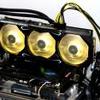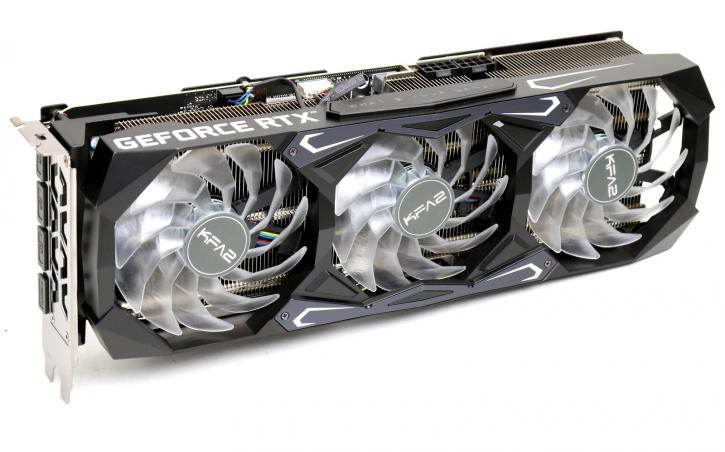Introduction
KFA2/GALAX GeForce RTX 3080 Ti SG review
In this review, we test the KFA2 GeForce RTX 3080 Ti SG review, a somewhat more cost-effective product in that premium segment and priced range of graphics cards. It certainly holds ground and is a fair performer. There's no denying it. It has been a bizarre year if we're talking computer components alone, silicon shortages, mining; it's been sour grapes for a long time. Likely that won't even change soon. People are almost fighting to grab a decently proceed graphics card, often running up to three times the MSRP pricing. NVIDIA is staying on its trajectory, though, implementing hash-rate limitations for consumer-grade GPUs and releasing refresh products pretty much as scheduled. Today, we see such a refresh product that positioned itself between the GeForce RTX 3080 and 3090. That product would be the GeForce RTX 3080 ti, and probably was the worst kept secret as of late in the history of NVIDIA. Armed with a shader core count of 10240 units, this card is paired with 12 GB of GDDR6X graphics memory running 19 Gbps. Much has been said, rumored, and spoken about this card, as with that libidinous shading core count, it is bound to be a bit of a beast in the enthusiast performance segment. You need to remember that it was less than a year ago that NVIDIA launched their Ampere GPU series, September 2020, in fact. A week before announcements, specifications of the GeForce RTX 3060 Ti, 3070, 3080, and 3090 took a twist; the shader core count mysteriously doubled up from what everybody expected, to date something massively important to this product range as yes, the competition has gotten fiercer as well. NVIDIA's GPUs are fabricated on an 8nm node derived from Samsung. This process further develops Samsung's 10nm process; no EUV is applied in production just yet. This second wave of announcements will see the GeForce RTX 3080 Ti and next week 3070 Ti (hey, come on, it's not a secret). The desktop product line of Ampere for consumers now entails the GeForce RTX 3060 Ti 8GB, 3070 8GB GDDR6, RTX 3080 10GB, RTX 3080 Ti 12GB, and RTX 3090; what we test today is a 12GB GDDR6X based close to the premium flagship. Much like the 3080 and 3090, the 3080 Ti will base based on the existing 28 billion transistors based GA102 GPU from NVIDIA, obviously reconfigured. The card has an impressive 10240 Shader processors activated, and mind you; the 3090 has 10496. A big change is that the memory is halved from 24 towards 12 GB (an excellent value).
KFA2 GeForce RTX 3080 Ti SG
You've noticed in the topic title already, but Galax is the mother company behind KFA2, for reasons of branding KFA2 sells in the EU regions predominantly, and Galax more widespread in Asia. make no mistake, the products are very much the same aside from boxing and branding. The KFA2 GeForce RTX 3080 Ti SG is sold as a single clock OC product, that however entrails installing and always using their proprietary tweaking software. We wish that manufacturers would simply dave the fastest Boosts a clock into the BIOS. At default the card runs a boost frequency of 1695 MHz, however with that OC boost functionality, you can get that value to 1710 (by installing Xtreme Tuner Plus Software and using 1-Click OC). It is a rather mild bump seen from the reference value which is a 1665 MHz boost. KFA2 quipped the card with a semi-passive design; the three fans start to spin and cool once the GPU warms up. The card is built pretty extreme however can be a little overwhelming once you take the design into account. There's more to it than that, though, as that front-facing fans are RGB lit, and it does make all the difference once you give it some juice. The memory runs stock at 19 Gbps effective. The SG has been fitted with an updated cooling solution with three fans. The card has been fitted with a duo of 6+2 pins for power connectivity. Weighing in at almost 1.7kg, this baby has been sized as well, 329x130x61mm. All that combined made KFA2 decide to add a bracket preventing PCB sagging. Also included is an extra fan which you can place at the backplate side for a bit of extra venting, we'll show you that on the next pages though. Though pricing should be at a 1200 EUR/USD level, currently the one street price that I can find brings this product close towards two grand. Next page, please.


